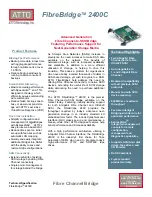
68
ASUS WLAN Card
Chapter 5
Chapter 5 - Glossary
Glossary
COFDM (for 802.11a/g)
Signal power alone is not enough to maintain 802.11b-like distances in an
802.11a/g environment. To compensate, a new physical-layer encoding
technology was designed that departs from the traditional direct-sequence
technology being deployed today. This technology is called COFDM (coded
OFDM). COFDM was developed specifically for indoor wireless use and offers
performance much superior to that of spread-spectrum solutions. COFDM
works by breaking one high-speed data carrier into several lower-speed
subcarriers, which are then transmitted in parallel. Each high-speed carrier is
20 MHz wide and is broken up into 52 subchannels, each approximately 300
KHz wide. COFDM uses 48 of these subchannels for data, while the remaining
four are used for error correction. COFDM delivers higher data rates and a
high degree of multipath reflection recovery, thanks to its encoding scheme
and error correction.
Each subchannel in the COFDM implementation is about 300 KHz wide. At
the low end of the speed gradient, BPSK (binary phase shift keying) is used to
encode 125 Kbps of data per channel, resulting in a 6,000-Kbps, or 6 Mbps,
data rate. Using quadrature phase shift keying, you can double the amount of
data encoded to 250 Kbps per channel, yielding a 12-Mbps data rate. And by
using 16-level quadrature amplitude modulation encoding 4 bits per hertz, you
can achieve a data rate of 24 Mbps. The 802.11a/g standard specifies that all
802.11a/g-compliant products must support these basic data rates. The standard
also lets the vendor extend the modulation scheme beyond 24 Mbps. Remember,
the more bits per cycle (hertz) that are encoded, the more susceptible the signal
will be to interference and fading, and ultimately, the shorter the range, unless
power output is increased.
Note: This ASUS WLAN device only supports 802.11g and 802.11b.
802.11a is supported in other ASUS WLAN products.





































